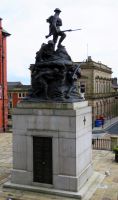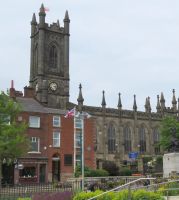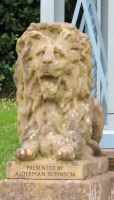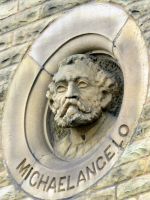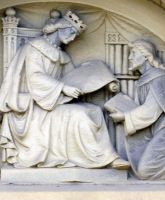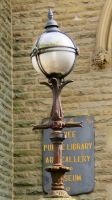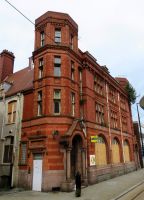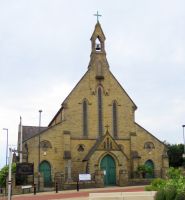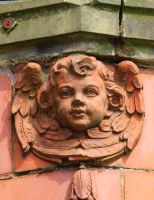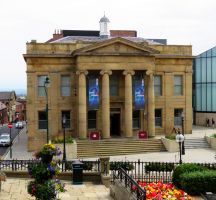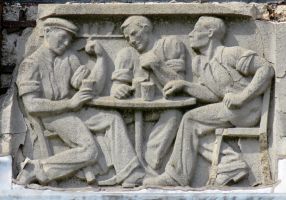Sculpture in Oldham
This page briefly introduces historic sculpture in Oldham and notes links to other pages about individual sculptural works there. Click on any picture to enlarge, or hover for caption.
Oldham is conveniently reached by light rail from central Manchester, and contains some good sculpture. The principal groups are sculptor Albert Toft's World War I Memorial, and D.W. Stevenson's statue of John Platt. The War Memorial is in front of Oldham Parish Church, a Victorian construction with an interesting group of inscriptions from the 18th and 19th Century in a pavement outside, and the Platt statue is accompanied by four other statues in Alexandra Park, close to the centre.
Details from the Oldham Free Library, Art Gallery and Museum.
We have architectural sculpture too, in the old Free Library, Art Gallery and Museum building on Union Street, which has been replaced by, and is being incorporated into a new 'Gallery Oldham'. This building, by the local architect Thomas Mitchell, has a summit figure, small relief panel, and 18 portrait heads on the exterior by the Manchester sculptor J.J. Millson, whose best known work is on the Manchester Fire Station and Coroner's Court, which can be admired from the front of the main rail station.
In Union Street (hover for captions).
Union Street was Oldham's showpiece street for civic architecture, and along with the Library, Art Gallery and Museum building, the visitor can see other buildings, albeit without sculpture, of the period. These include:
- Two more buildings by Thomas Mitchell – the Masonic Hall at no.105, and the Church of Our Lady of Mount Carmel and St Patrick (the latter is pictured above),
- The Italianate Lyceum theatre, built in 1855-56 to the design of another Manchester architect, Nathan Pennington (b.1827),
- The Prudential building, 1889, by the nationally important architect Alfred Waterhouse, who along with designing Prudential buildings across the country, was the architect of Manchester Town Hall, and the Natural History Museum in London. See picture above.
- Oldham School of Art and Science, 1880, by the local architects Woodhouse and Potts, who set up an architectural practice together in Oldham. Classical again.
- Directly behind that building, facing onto York Street, is the former Oldham Town Hall (built 1839-41), with an imposing Greek portico, the principal work of the Manchester architect Joseph Butterworth. It was later extended by the same Woodhouse and Potts noted above. George Woodhouse (1829-1883), who had a separate, larger practice in Bolton, designed many churches especially for the Methodists (he was himself a Methodist), including the one in Oldham, co-designed Bolton Town Hall, and designed lots of other buildings in the region including cotton mills. Cotton mills however were the particularly speciality of his Oldham partner Edward Potts (1839-1909), who designed apparently over 200 in all.
Classical grandeur: Oldham Town Hall.
Pages on this website about Oldham:
And also see the starting page for Manchester, and a page on nearby Salford too.
